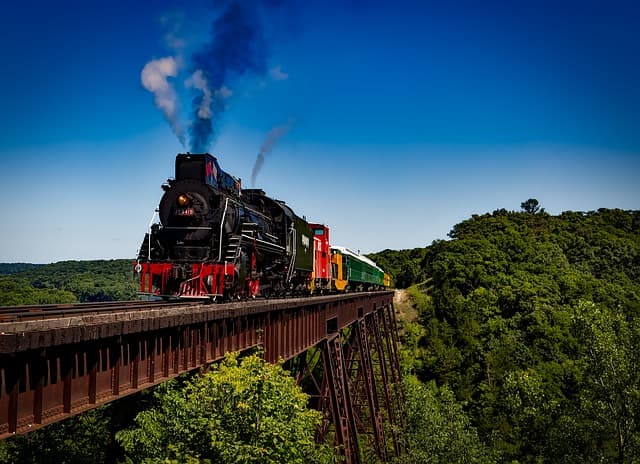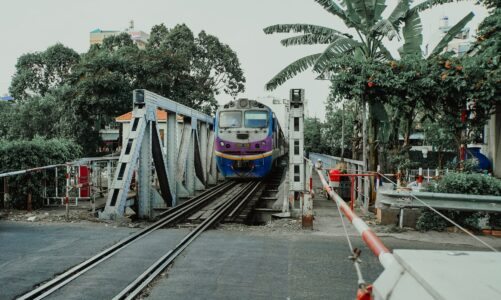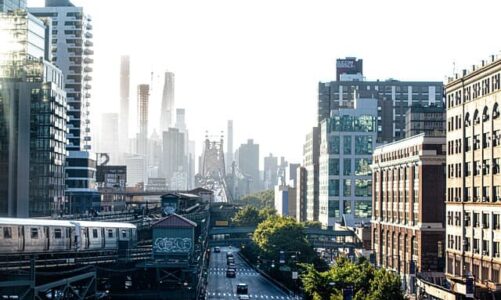Amtrak, the national passenger railroad company in the United States, has been in business since 1971. Its ambitious development plans, backed by the federal and state governments, could radically change the operator’s role in the country’s transportation market in the near future.
In August 2021, the U.S. Senate approved the Infrastructure Bill, which provides for the allocation of $1 trillion for the renewal and development of the country’s transport infrastructure. IN AUGUST 2021, THE U.S. SENATE APPROVED THE INFRASTRUCTURE BILL. Of that amount, $66 billion will be used to improve intercity rail service, of which $22 billion is for Amtrak Corporation, including $6 billion to upgrade the infrastructure of the 735 km Northeast Corridor Washington-New York-Boston with design speeds on some sections from 201 to 241 km/h and $16 billion to modernize the national rail network, including lines that carry government-subsidized passenger service.
In addition, $39.2 billion is earmarked for urban rail systems, and the U.S. Federal Railroad Administration (FRA) should receive $36 billion, including $24 billion for upgrades to the Northeast Corridor and $12 billion for new sections and intercity line upgrades. There is $8 billion for safety improvements on freight rail lines used to pass passenger trains, such as eliminating railroad and highway level crossings.
It should be noted that in its half-century history Amtrak has never before received funding of such volume. According to experts, allocation of 6 billion dollars for the Northeast corridor will allow to carry out urgently needed measures on modernization of rolling stock, re-equipment, reconstruction and development of repair enterprises, bringing passenger stations in accordance with requirements of the Americans with Disabilities Act (ADA).
Similarly, the $16 billion addressed to the national railroad network will allow for long-delayed, capital-intensive activities on Amtrak’s assets.
Connect NEC 2035 Plan
The corporation’s allocation could be used for projects included in the Connect NEC 2035 Plan (C35). The plan was introduced on July 15, 2021, by the Northeast Corridor Commission, established by the U.S. Congress with four representatives from Amtrak, five from the U.S. Department of Transportation, and one each from the federal District of Columbia and the states of Massachusetts, Rhode Island, Connecticut, New York, New Jersey, Pennsylvania, Delaware, and Maryland. The $117 billion Connect NEC 2035 plan. The $117 billion plan is 15 years long and includes about 150 projects to rebuild the Northeast Corridor, which before the coronavirus pandemic was carrying up to 2,200 trains a day. The goals of the project include expanding the areas served and reducing travel times while improving the reliability and safety of transportation.
Among the priorities of this plan are the Gateway project, which will build a long-awaited new tunnel under the Hudson River in New York City to complement the 111-year-old North River Tunnels and replace the Baltimore & Potomac Railroad tunnel in Maryland, in service since 1873. Equally high priorities are upgrading the East River Tunnel in New York City and replacing critical bridges in New Jersey and Connecticut, which are 110 to 120 years old.
Nationwide, Amtrak’s priorities are guided by Connects US’s 15-year strategy to cover the U.S. rail network. This strategy was released on March 31, 2021, the same time the head of state presented a draft national infrastructure program. The essence of Amtrak’s strategy is to connect up to 160 territorial entities in 25 states with rail lines by building new lines and modernizing existing ones. Amtrak has identified 59 corridors and plans to open new passenger stations in more than half the states, thereby improving transportation services to 47 of the 50 largest U.S. metropolitan areas and creating more than half a million well-paid new jobs. By 2035, Amtrak’s transportation services are projected to have an annual net economic impact of $8 billion and an annual value-added created of $195 billion. Preliminary estimates show that by 2035, the corporation could have 20 million more riders per year and $800 million more revenue per year than it did in pre-pandemic 2019 as a result of this strategy.
Specifically prioritized for development are the following rail routes: New York – Albany – Montreal, San Diego – Los Angeles – Santa Barbara – San Luis Obispo, Chicago – St. Louis and Chicago – Milwaukee (Minneapolis), for which plans are already being developed.
The latter route is currently served by a daily Empire Builder long-distance train linking Chicago to the cities of Portland on the Columbia River and Seattle on the Pacific Coast, as well as seven trips a day by a Hiawatha-branded train.
Another priority of Amtrak’s strategy is to build new lines in regions that have seen rapid population growth in recent decades, to which the company has not previously been able to respond adequately. This includes the formation of the meridionally oriented Front Range corridor to connect Cheyenne, Wyoming, with Fort Collins, Denver, Colorado Springs, and Pueblo, Colorado. There are about 5 million people living in the area that is gravitating to the corridor in question.
The so-called 3C+D corridor in Ohio is also a priority for Amtrak. The four major cities in that state, Cincinnati, Dayton, Columbus and Cleveland, which gave the corridor its name, are currently not served by rail. Amtrak proposes to run three daily trains with a 5:30 trip time along the route. There are also plans to extend the Heartland Flyer (Fort Worth-Oklahoma City) northward to Wichita and Newton, Kansas, i.e., to connect with the Southwest Chief (Chicago-Los Angeles).
There is also a priority plan for improving transportation in the Texas Triangle megaregion, with new rail passenger service between its four largest cities, Dallas, Houston, Austin and San Antonio, and the resumption of the daily Texas Eagle (Chicago to San Antonio) train service.
Amtrak’s priorities also include new connections between Los Angeles and Riverside, California, and Phoenix and Tucson, Arizona. Phoenix is the fifth most populous city in the U.S., but with a developed urban rail transport, it lacks intercity rail passenger service (the nearest passenger station is 48 km away). However, the implementation of this and other possible projects specified in the 15-year Amtrak strategy requires the effective cooperation of local authorities and other involved structures. Only together with them can the basic parameters of the new passenger corridor be defined, which will ensure its efficiency.
Another high-priority project reflects Amtrak’s commitment to one-hour train service in Virginia over the next 10 years. The $3.7 billion Transforming Rail in Virginia initiative proposes building a new double-track line between Washington, D.C., and Ridgeway, N.C., with Amtrak intercity trains and Virginia Rail Express (VRE) commuter trains.
The company is prepared to invest $944 million in the construction of this line to allow it to run six daily pairs of trains and the exclusive right to intercity service for 30 years.
This project also includes the construction of a new double-track bridge over the Potomac River specifically to allow passenger trains to pass in close proximity to the CSX-owned bridge, the only railroad bridge currently connecting the U.S. capital with the state of Virginia. The cost of the bridge is estimated at $1.9 billion, and another $1 billion must be invested in infrastructure development in the state, including the construction of 60 km of new track, which is supposed to be built in several stages until 2030.
This ambitious project under consideration would provide Amtrak with direct passenger service between the Northeast Corridor and the states of Virginia and North Carolina, potentially complementing the Raleigh to Charlotte, North Carolina service served by the Piedmont train, which has been in growing demand in recent years, and the New York to Charlotte (Carolinian long-distance train) service.
There are also plans for a high-speed line between Charlotte, North Carolina, and Atlanta, Georgia.
If we consider that Charlotte is the second most important financial center in the United States after New York, the Raleigh – Durham – Cary triangle in North Carolina is a major technical and technological center of the Atlantic coast, and Washington is the capital of the country, which the Northeast Corridor connects with New York and Boston, it becomes clear what prospects Amtrak Corporation has in this region.
State governments in the Midwest, South and Southwest United States are now actively committed to developing rail passenger service in their territories. The geography of Amtrak’s transportation service offerings may change considerably when the company gains access to regions where rail transportation has so far been exclusively for freight. In 1971, the rail passenger service network was based on the distribution across the country of its 220 million people. After half a century, the U.S. population reached 333 million, and while it remained almost unchanged in the Midwest and Northeast, in the South, Southwest and West it increased by about 110 million. By 2050, the population could grow to 389 million.
Meanwhile, Amtrak’s message network has not changed much since 1971. However, in a number of key corridors, the operator is ahead of competing air transport: for example, Amtrak’s share in 2019 in traffic in the connection New York – Washington was equal to 78%, in connection New York – Boston – 54%, Seattle – Portland was 57%.



